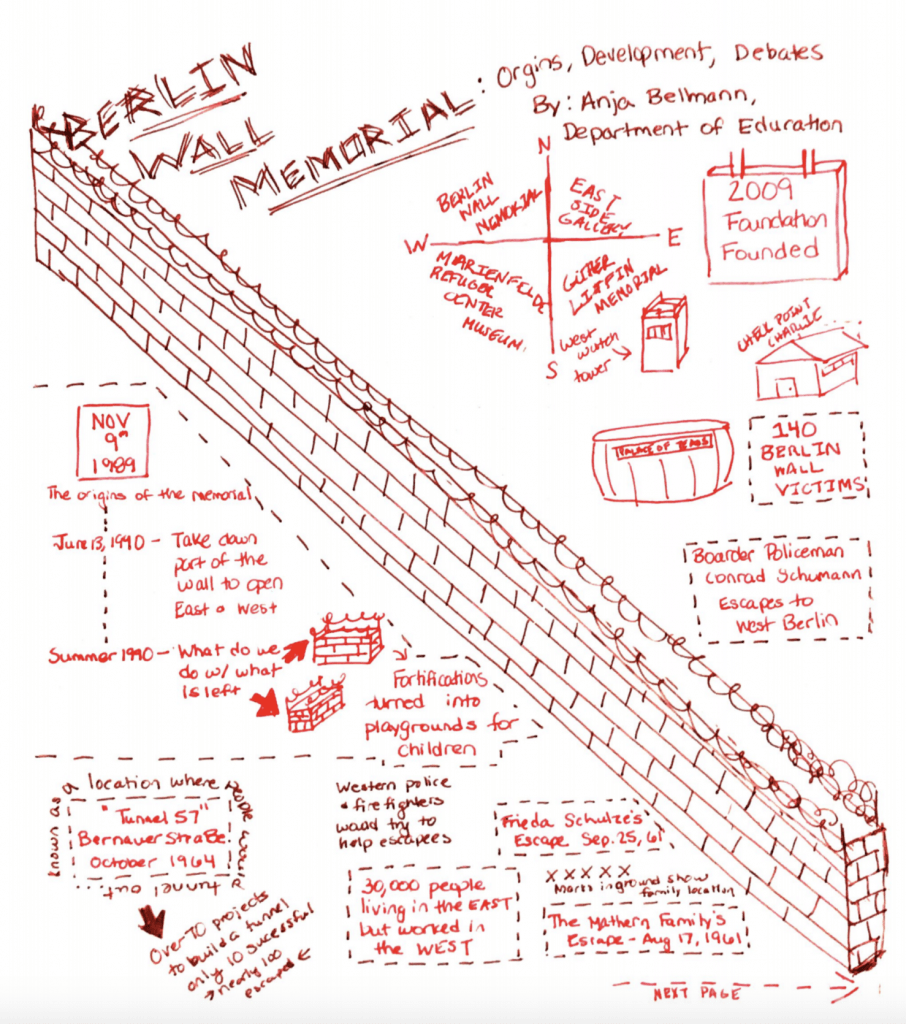This morning I was able to explore the Berlin Wall Memorial. There is so much to see and do here and a person could easily spend half a day exploring this memorial, which is several city blocks long. The memorial is only one block away from a train stop so it is also very easy to get to by public transportation. Upon our arrival at the museum, our TOP group was greeted by Ms. Anja Bellmann, who works in the education department of the museum and specializes in historical-political work. Ms. Bellmann provided us with an extensive overview of how the memorial came to be and what particular “must see” elements she would suggest.
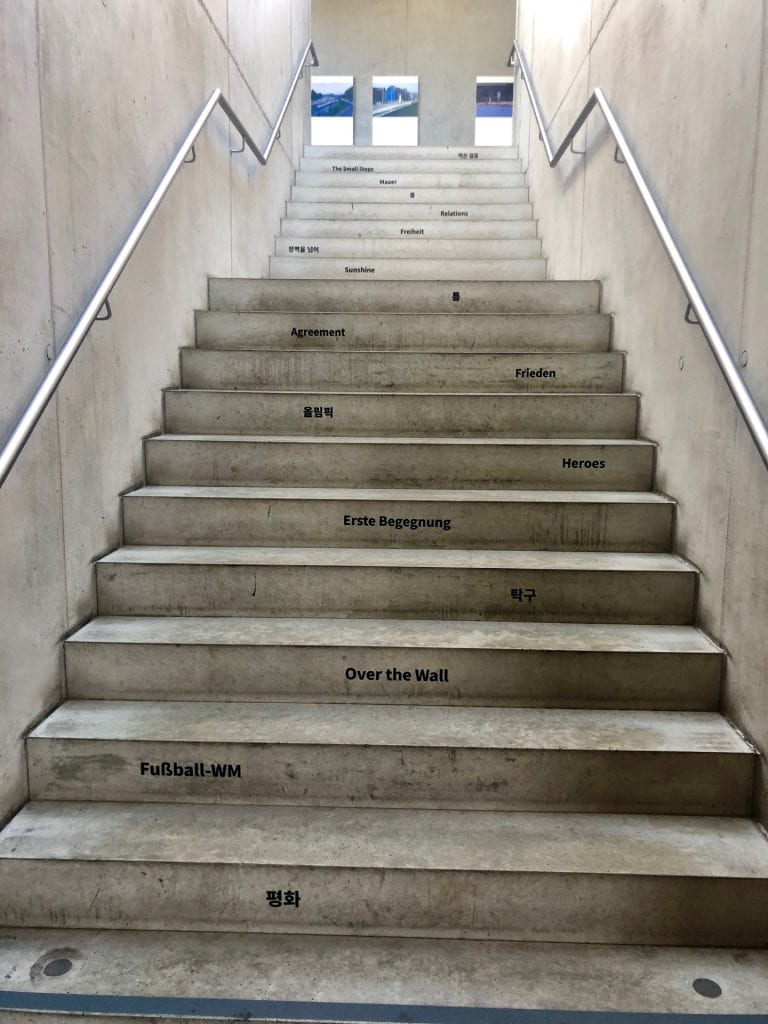
It turns out the Berlin Wall Memorial is just one of four memorials throughout Berlin dedicated to the former German division. The others include the Marienfelde Refugee Center Museum, the Güter Litfin Memorial and the East Side Gallery. (The East Side gallery really sparked an interest with me and I’m hoping that I am able to visit it one of the evenings I am here in Berlin.) The idea for the Berlin Wall Memorial first originated in 1989 when Germany was reunited, as people wanted to remember the separation, rather than forget and allow history to repeat itself. In June, 1990, the German government began to take down part of the wall to allow for easy access between the East and West and by mid-summer people began asking “what do we do with what is left of the wall”. I found it particularly interesting when Ms. Bellmann shared that fortifications that once were installed to keep people separate had now become playgrounds for children. By October it was realized that some type of monument should be constructed to remember the wall and four years later a competition was held for the design, which was to be dedicated to the victims of the Berlin Wall and to the memory of the once divided city. Construction of the monument was completed in 1998 with three primary focuses for all visitors, an artistic, factual and spiritual look of the history and consequences of the Berlin Wall.

However, those in charge of the monument had a major problem, nearly all of the border fortifications had been torn down and there was little evidence left to show the dark history that had shadowed the city for decades. Therefore, several sites around the city have been linked to show the full history. Ms. Bellmann told us the first part is the visitors center (which we were currently in). This serves as a starting point for visitors and gives background knowledge about the Wall and memorial. The rest of the memorial is divided into four parts (A, B, C and D). A is the Wall and Death Strip, B is The Destruction of the City, C is the Building the Wall and D is Everyday Life at the Wall.
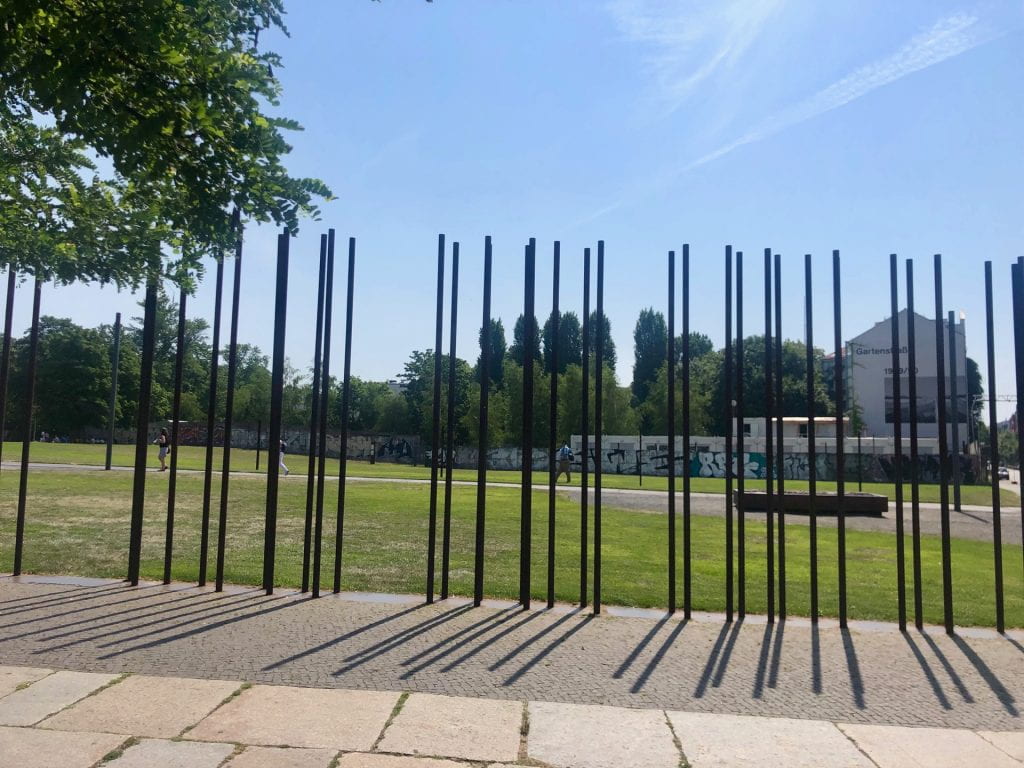
Learning about what to look out for as we walked through the memorial was really helpful as there are small memorials throughout the city blocks to commemorate the lives of those who were impacted. For instance, Ms. Bellmann told us to pay attention as we walked along Bernauer Strasse (Bernauer Street) and to look down. Various plaques show the location of the families who lived in these border houses and who escaped. There are also borders within the ground that show the pattern of former houses in the East that are no longer standing.
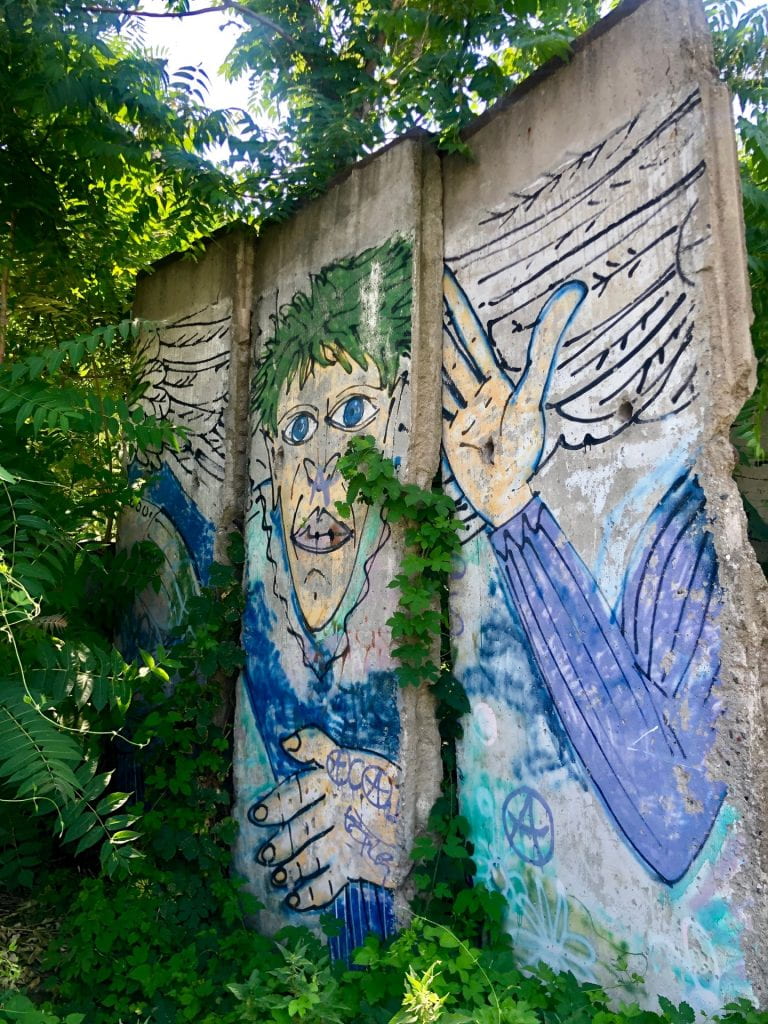
With our very own maps, we then headed off on our own to explore and learn… here is what I saw.
I began in Area A: The Wall and Death Strip. It was clear as soon as I stepped foot into this area that the border was a brutal way for the GDR to suppress the people who lived in the East. Here I was able to see up close the various border fortifications used over time, as well as read individual stories of people in the East and West. It was bone chilling to walk alongside the wall, but even more frightening when I found myself walking in the shadow of the wall. Looking up, the wall loomed overhead and I wondered how many individuals had stood near my same spot wondering about their family and friends on the other side.
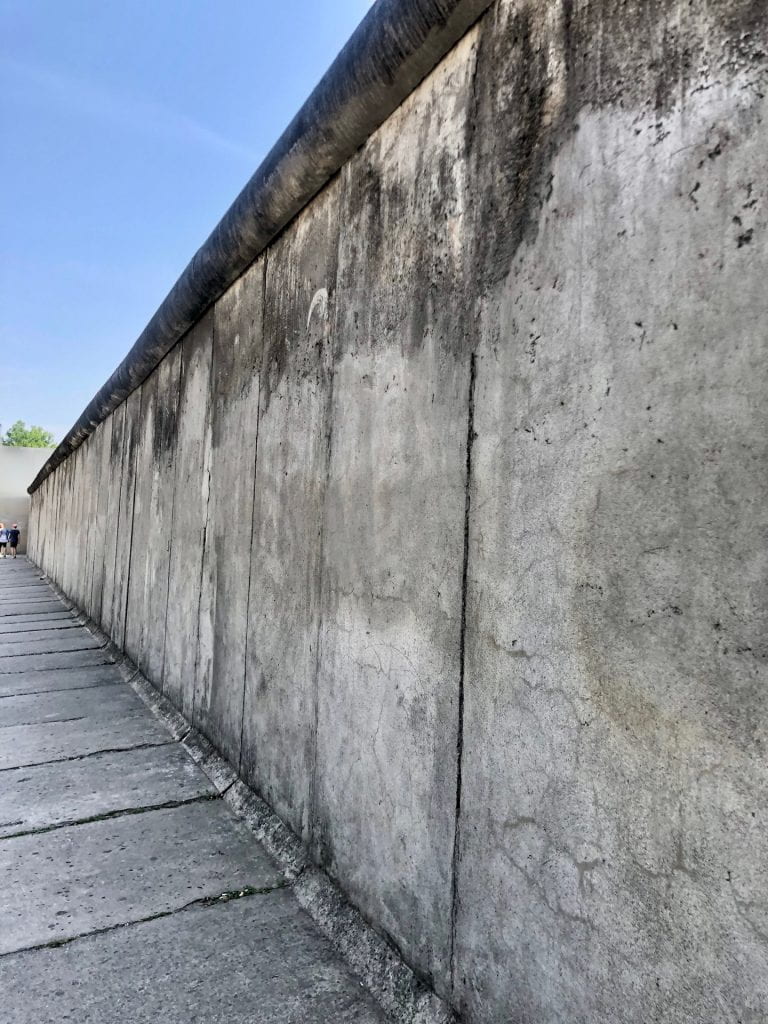
In section A I also spent some time at the “Window of Remembrance”, which provides information about the victims of the Berlin Wall. I was able to learn more about the individuals that Ms. Bellmann had talked about during her lecture. I found it interesting that there are several open spaces within this memorial. This is due to the fact that the numbers of Berlin Wall victims has increased with the passage of time as more individuals come forward and share their stories. It is also important to note the archeological windows on Bergstrasse, which show older layers of the border fortifications.

At the very end of Area A, visitors can walk around the wall and find themselves standing in a small section of the preserved border strip. Here there was no grass, no flowers, nothing but an ominous grey cement wall and the terrifying watch tower. Behind this section of the border wall you can see the cemetery of the Sophien parish. When the wall was first built, graves had to be moved to accommodate the ever growing border fortifications.

Continuing to walk down further, I found myself in Area B: the Destruction of the City. This was the area I was most interested to see for myself, as it told the story of the people who lived on the Bernauer Strasse. These residents made a name for themselves as since they lived directly on the border many were able to escape to the West by jumping into rescue nets or climbing down the side of the building using ropes. Due to the rampant amount of escapes from these buildings they were torn down by the GDR in the mid 1960’s, but the outlines of these border homes are now marked as part of the open-air exhibit.
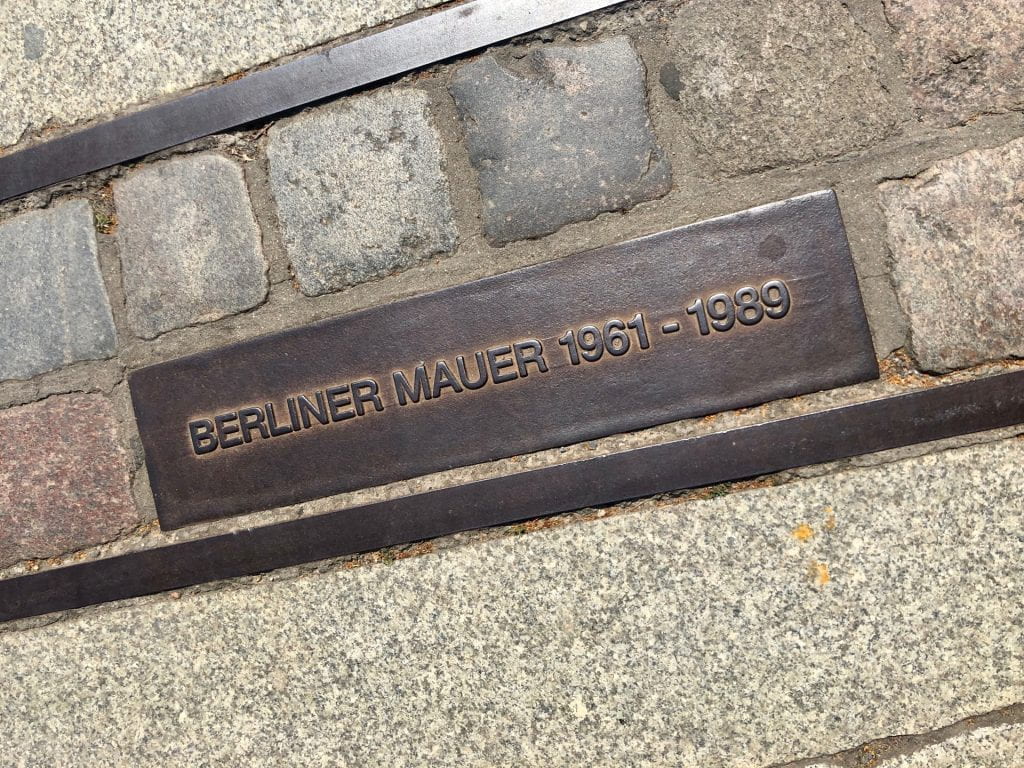
One such family, the Mathern family fled from the ground floor of their house on 11 Bernauer Strasse on August 17th, 1961. Another family known as the F family jumped into the rescue net of the West Berlin fire department from their home on Bernauer Strasse 7 after their neighbors turned them into the border police. Mrs. F jumped into a rescue net after a border guard spotted her from a building next door and ordered her to climb down. He then forced himself into her apartment as her husband dropped their 5 year old son down and then jumped into the rescue net himself. These are just two of the many risky actions people took to secure their freedom in the West. In this exhibit, you can also find the location of the underground escape tunnels! Seeing these in person immediately made me think back to a beloved book in my classroom, The Night Divided by Jennifer Nielsen (see link below). If you teach about the Berlin Wall I highly suggest this book for your middle grade readers.

With time running out before we had to meet back up with our group leader, I was unable to visit areas C and D. Like I said before, if you are planning on visiting the Berlin Wall Memorial plan at least ½ a day. There is so much to see and learn here. With time running out, I spent the last part of exploration at the viewing platform and documentation center. The newly renovated documentation center explains the political and historical situation that led to the Wall’s construction, fall and eventually reunification of Germany. This part of the exhibit provides visitors with various questions to ponder, which would be great inquiry ideas for teachers to use within their own classrooms. These questions include: Why was the wall built? Why did the Wall stay up so long? Why did the Wall fall?
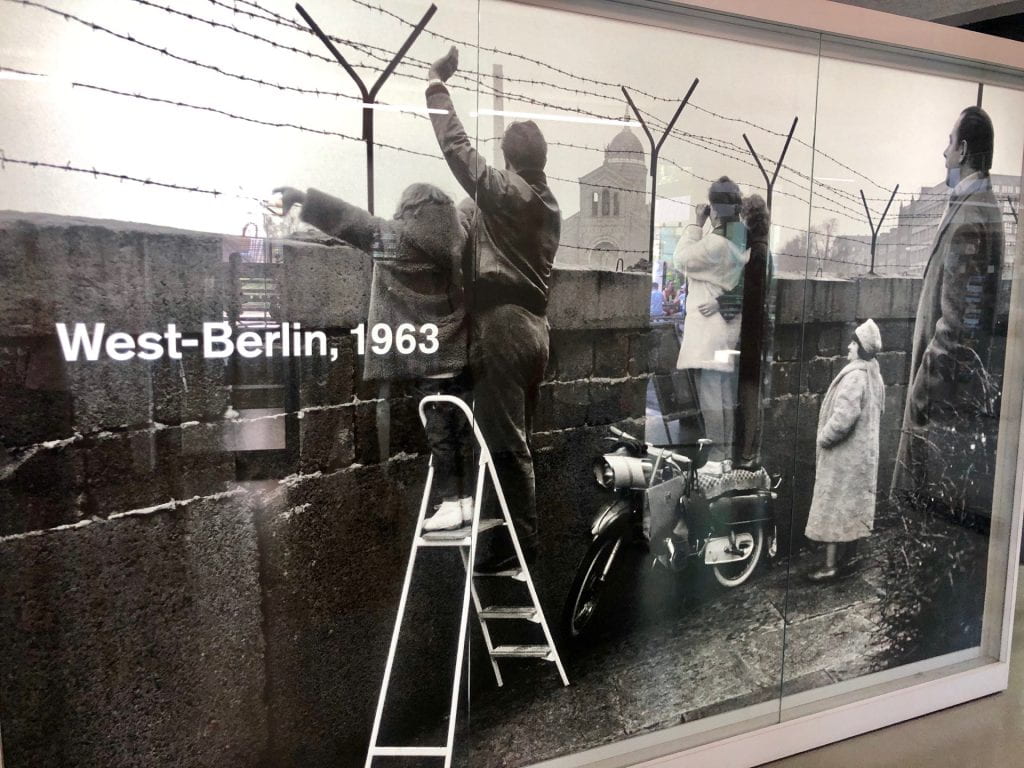
The viewing platform gave me a completely different perspective. Whereas while I walked around Areas A and B I got an understanding of what individuals in the East felt under the pressure of the GDR, the viewing platform helped me to understand what those in the West may have felt. The idea that they were free, while their friends and family were not, the feeling that you are so close to someone yet so far away is really indescribable. From this viewing platform, I could see the former border strip that stretched the length of Bernauer Strasse. It was here that I could really understand the many layers that were added to keep the people of Germany divided.
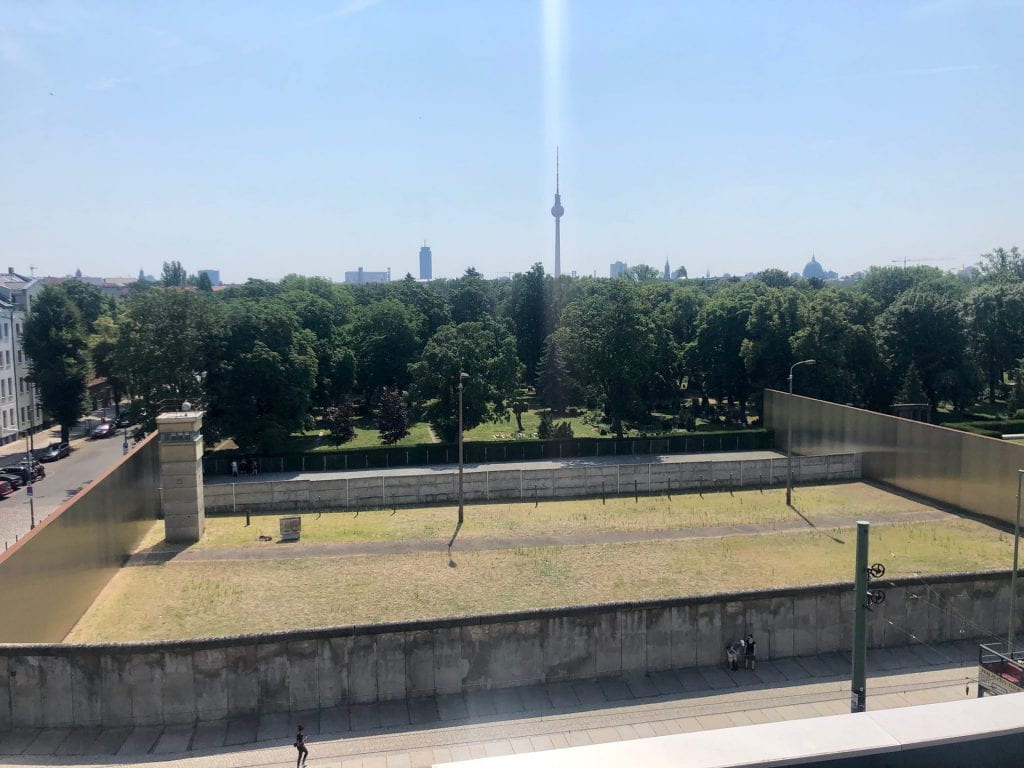
Berlin Wall Memorial: https://www.berliner-mauer-gedenkstaette.de/en/index.html
A Night Divided By Jennifer Nielsen: https://www.amazon.com/Night-Divided-Scholastic-Gold/dp/0545682444/ref=sr_1_1?keywords=A+night+Divide&qid=1563921391&s=gateway&sr=8-1
